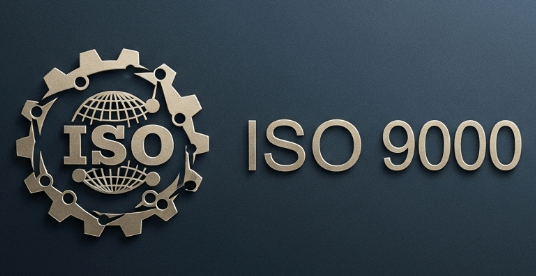- Metrics for Process and Products
- Software measurement
- Metrics for Software Quality
- Risk Management
- Reactive versus Proactive Risk Strategies
- Software Risks
- Risk Identification
- Risk Projection
- Risk Refinement
- RMMM
- RMMM Plan
- Quality Management
- Quality Concepts
- Software Reviews
- Formal Technical Reviews
- Statistical Software Quality Assurance
- Software Reliability
- The ISO 9000 Quality Standards
The ISO 9000 Quality Standards
In the pursuit of consistent quality across various industries, the ISO 9000 quality standards stand as a globally recognized benchmark for quality management systems. Published by the International Organization for Standardization (ISO), these standards provide a comprehensive framework for organizations to establish, implement, maintain, and continually improve their quality management processes. While not specific to software, their principles are highly applicable to software engineering, guiding companies to create robust systems that lead to higher product quality, increased efficiency, and enhanced customer satisfaction. Adherence to ISO 9000 demonstrates an organization’s commitment to delivering products and services consistently meeting customer and regulatory requirements.
What are the ISO 9000 Quality Standards?
The ISO 9000 quality standards represent a family of standards related to quality management. The core standard is ISO 9001, which outlines the requirements for a quality management system (QMS). When an organization seeks “ISO 9000 certification,” they are typically certifying against ISO 9001.
- Purpose: To help organizations ensure they meet customer and other stakeholder needs within statutory and regulatory requirements related to a product or service.
- Focus: It defines how an organization can meet the requirements of its customers and stakeholders by setting up effective processes. It doesn’t specify how a product should be built, but rather how the process for building it should be managed for quality.
- Universality: These standards are generic and can be applied by any organization, regardless of its size or industry, including software development companies.
Key Principles of the ISO 9000 Quality Standards
The ISO 9000 quality standards are built upon seven fundamental quality management principles. These principles guide organizations in achieving and maintaining high levels of quality performance:
- Customer Focus: Organizations must understand current and future customer needs, meet customer requirements, and strive to exceed customer expectations. This is paramount for quality.
- Leadership: Leaders at all levels establish unity of purpose and direction, creating conditions in which people are engaged in achieving the organization’s quality objectives.
- Engagement of People: Competent, empowered, and engaged people at all levels are essential to enhance the organization’s capability to create and deliver value.
- Process Approach: Consistent and predictable results are achieved more effectively and efficiently when activities are understood and managed as interrelated processes that function as a coherent system.
- Improvement: Successful organizations consistently focus on improvement. This means continuously looking for ways to enhance products, services, and processes.
- Evidence-based Decision Making: Decisions based on the analysis and evaluation of data and information are more likely to produce desired results.
- Relationship Management: For sustained success, organizations manage their relationships with relevant interested parties, such as suppliers.
Benefits of ISO 9000 Certification for Software Engineering
Adopting and certifying against the ISO 9000 quality standards offers numerous benefits specifically for software engineering organizations:
- Improved Process Consistency: ISO 9000 mandates documented processes, leading to more consistent and repeatable software development practices. This reduces variations and errors.
- Enhanced Product Quality: By focusing on process quality, organizations are more likely to produce high-quality software that meets specifications and is reliable.
- Increased Customer Confidence: Certification signals to customers that the organization has a robust quality management system, building trust and potentially attracting more business.
- Reduced Rework and Costs: Standardized and controlled processes lead to fewer defects, which in turn reduces the cost of rework and overall development expenses.
- Better Communication: The emphasis on documentation and clear procedures often improves internal communication and understanding across teams.
- Continuous Improvement Culture: The standard encourages a mindset of continuous improvement, pushing the organization to regularly review and enhance its processes.
- International Recognition: ISO 9000 is globally recognized, facilitating international trade and partnerships.
